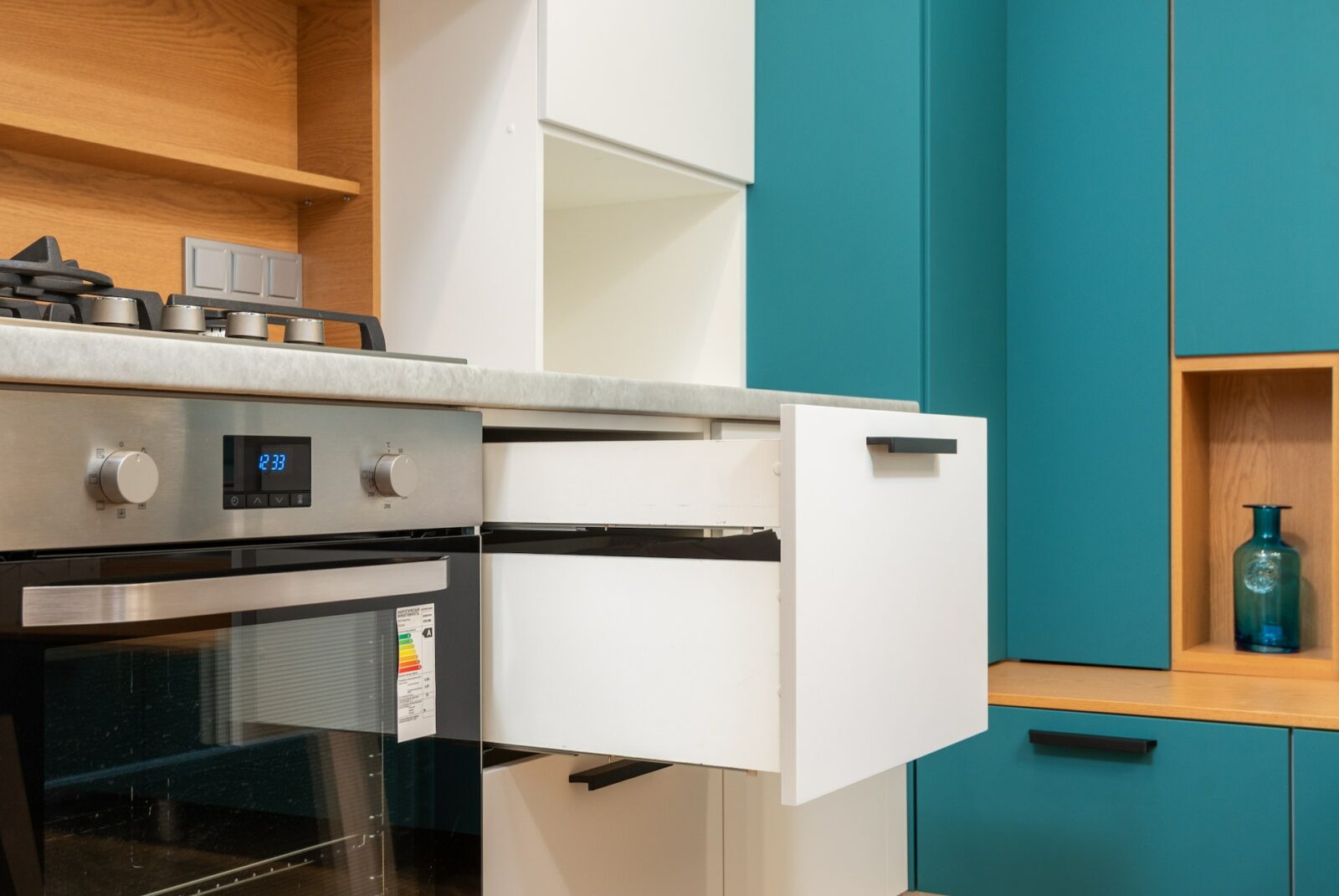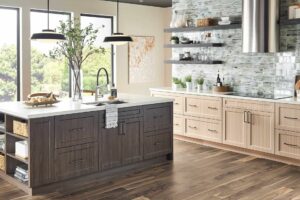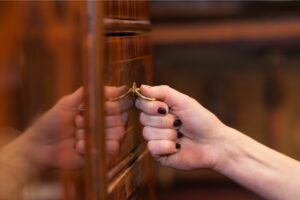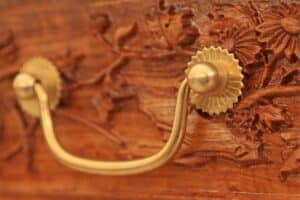If you’re looking for the correct answer for where to put knobs and handles on kitchen cabinets, then here it is. The accessibility of the knob is something vital to consider. You also need to take into account the natural movement of your pulling motion. Additionally, you want the knob or handle to work with the symmetry of the cabinet and the entire kitchen.
Knobs and handles double as a functional and decorative pieces that will influence the look of your entire kitchen. Think of them as an accessory that gives you accessibility to your cabinetry.
Talking time to think of where to place them is worthwhile. Check out the following points to help you determine the best way to place knobs and handles. The right placement will get your kitchen looking put-together and working great.
First things first, get to know the distinctions of the different options for kitchen knobs and handles. This will come in handy when choosing your fixtures and finding the right placement for them. Additionally, knowing the correct terminology will remove any miscommunication between suppliers and installers of these fixtures.
[ez-toc]Knobs
Knobs are typically circular in shape and are held down by a single screw. They are usually mounted at the bottom or center of cabinets and at the center of drawers. Apart from their usual circular shape, you can also find knobs shaped like a ‘T’, square, hexagon and triangle.
These fixtures take up the least space and you can select from a wide array of designs, materials, and even degrees of transparency. Glass knobs for instance look beautiful in a cabinet dedicated to fine china. You can select knobs made of leather, ceramic, natural stone, acrylic, and even crystal.
Due to their size, knobs have the least benefit of altering your cabinets. You only need to drill one hole to screw them in.
Where To Place Knobs
For Cabinets
Cabinet knobs are always placed opposite of the hinges. A good rule of thumb to follow is to situate knobs 2 ½ to 3 inches from the corner of the cabinet door. This goes for both placing the knobs at the center or bottom of the cabinet door. For base cabinets, place them at the upper corner of the door. Also 2 ½ to 3 inches away from the upper corner.
For Drawers
Knobs look most balanced when placed at the center. This especially goes for drawers that are 2 feet long or less. You can either place knobs at the center of the drawer or the upper middle part of the drawer. Placing knobs on the upper part will give you more leverage over a sink tilt-out tray.
If you have a drawer that’s 2 feet or more, you can opt to have 2 knobs in place. Divide the length of the drawer into thirds. Place the knobs at the one-third and two-thirds mark best for the best symmetry.
Pulls
Cabinet pulls are exactly as they sound. They are fixtures that you can get your fingers through and pull a cabinet or drawer open. They work well with drawers carrying heavy items because they’re easy to grasp. They also compliment tall cabinets well.
The length of pulls works cohesively with the length of a cabinet. The right length of a pull in accordance to the proportions of your cabinet is needed. This allows you to open it easily. Pull length helps to distribute the force of pulling a cabinet open across a wider area in a way knobs don’t.
Pulls also come in a wide array of designs. Length, color, material and thickness all vary depending on the type of pull you choose.
Apart from regular pulls, you can select from other variations of pulls.
- Cup Pulls allow you to grasp it from underneath and pull out a drawer. They are classic-looking fixtures and give a vibe of simple luxury.
- Finger Pulls is a single lip located at the top or bottom of a drawer or cabinet. It lets you open drawers and cabinets with one finger. Finger pulls are sleek and work great for those who want a streamlined and minimal look for their cabinetry.
Where To Place Pulls
For Cabinets
Place pulls vertically on cabinet doors. This creates symmetry and works with the natural flow of the door. Placing pulls vertically also gives the most leverage. Like with knobs, space pulls 2 ½ to 3 inches away from the door, opposite of the hingest.
For upper cabinets, the bottom screw of the pull is your anchoring point of reference for how far it should be spaced from the corner. For lower cabinets, it’s the opposite. Use the top screw as the anchoring point from how far the pull should be from the drawer.
For fingers pulls on upper cabinets, let it run along the bottom of the door. For lower cabinets, run them at the top. This placement is for obvious accessibility reasons.
For Drawers
Pulls are placed horizontally along drawers. Again, this works with the natural flow of the drawer. It also distributes your pull force more evenly.
For regular pulls, place them at the center of the drawer. You can opt to place the pull at the center top portion of the drawer as well. Like with knobs, you can use two pulls for a drawer longer than two feet. Measure out the drawer length in thirds and place your pulls at the one-third and two-thirds mark.
Cup pulls work best with low drawers. Place the pull at the top center of the drawer for the most efficient accessibility. Ofcourse, this isn’t a hard rule. As long as cup pulls work with your natural movement of opening and closing drawers, you can place them higher up as well. Just keep in mind that cup pulls can only be accessed from the bottom. Weight out style over functionality when placing your cup pulls on more unconventional areas.
Lastly, finger pulls have the same placement guidelines for cabinets and drawers alike. Run them along at the top of lower drawers, and at the bottom of upper drawers for optimal placement.
Final Thoughts
Knowing where to place your knobs and handles in your home may seem like an afterthought, but these small pieces make a difference. With the right placement that suits your style and the functionality of your kitchen, you’ll quickly realize that the right knob and handle placement make a big difference.
